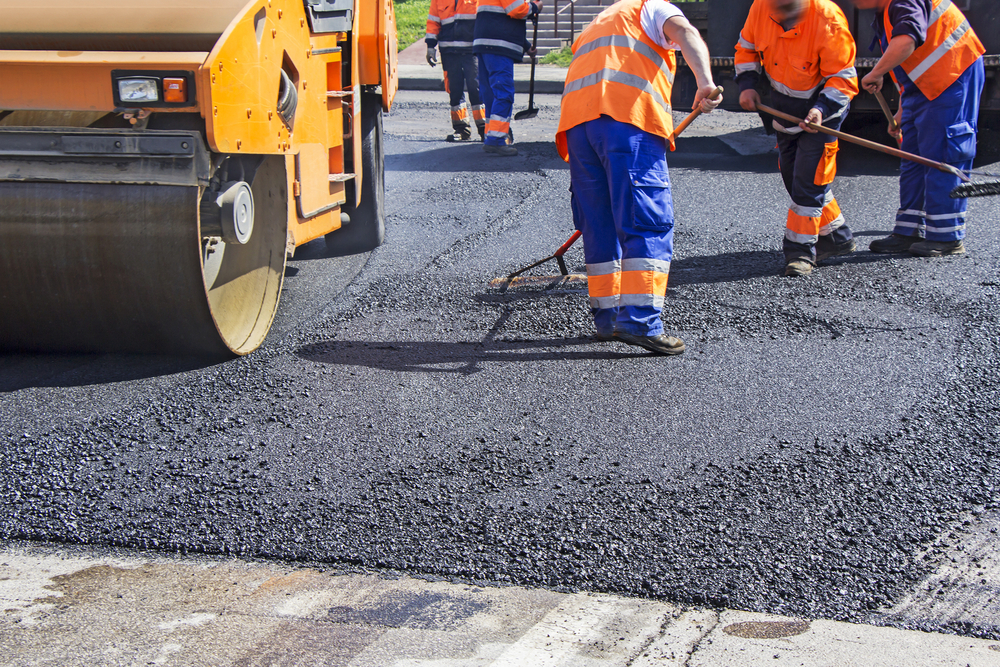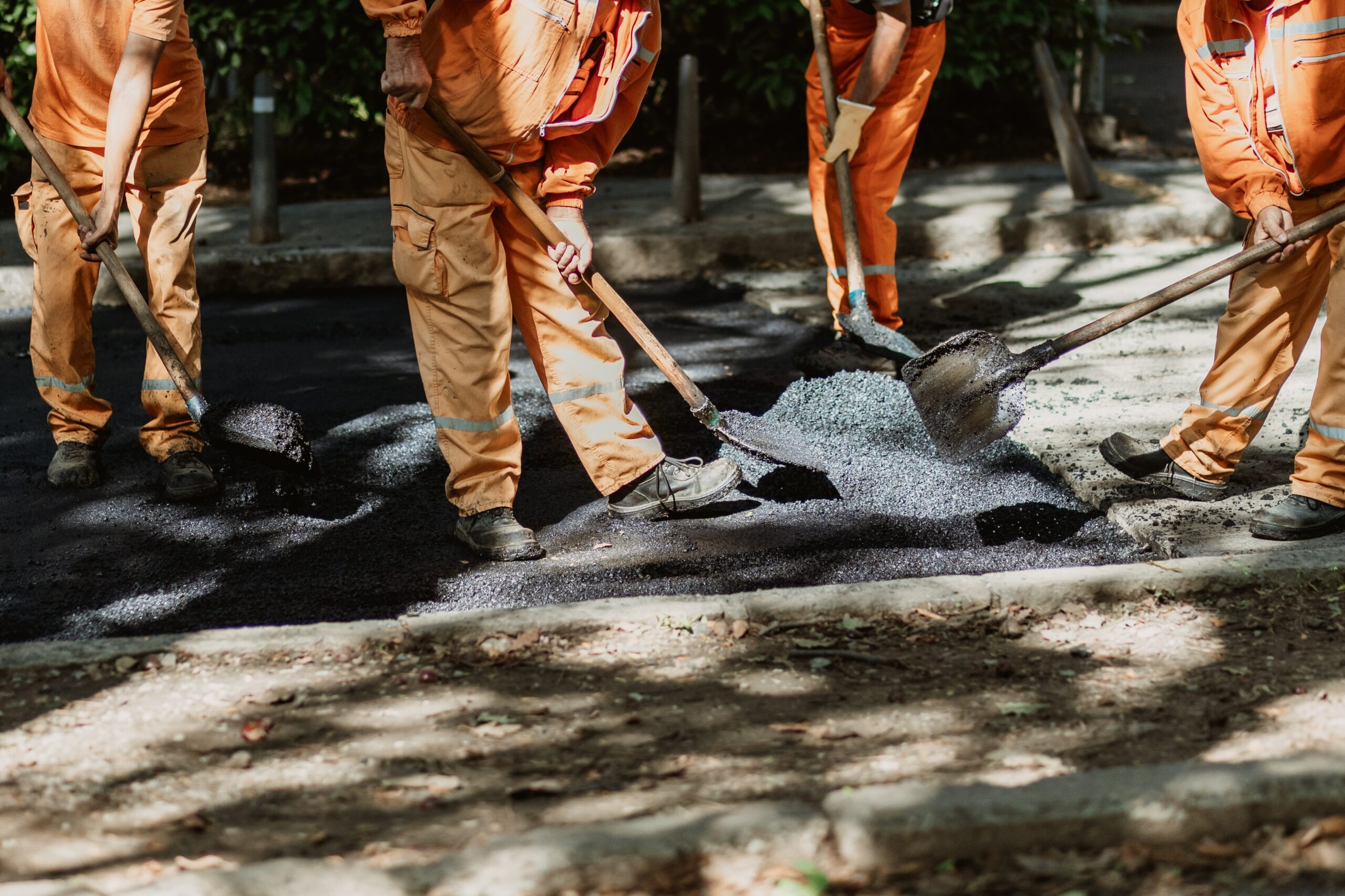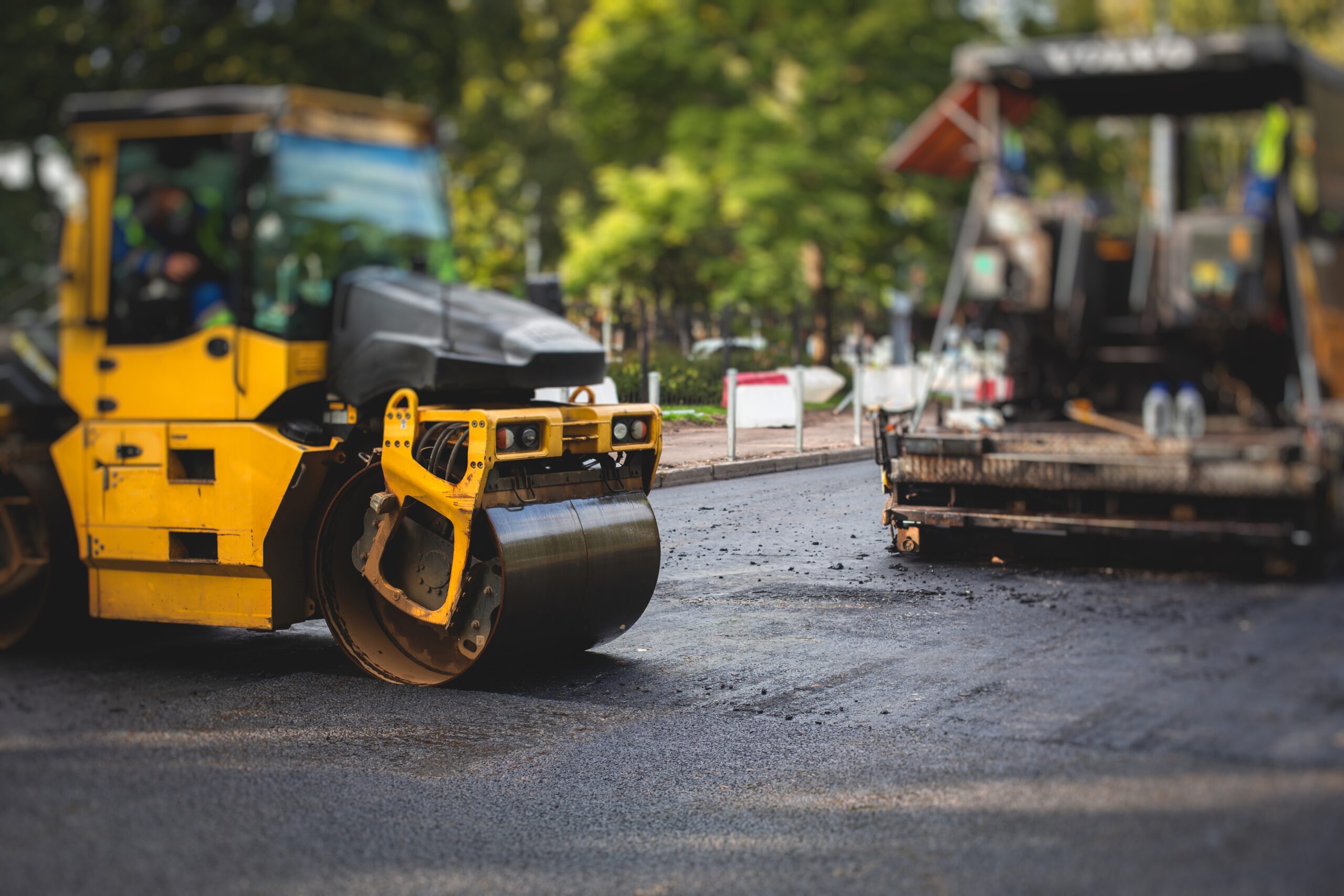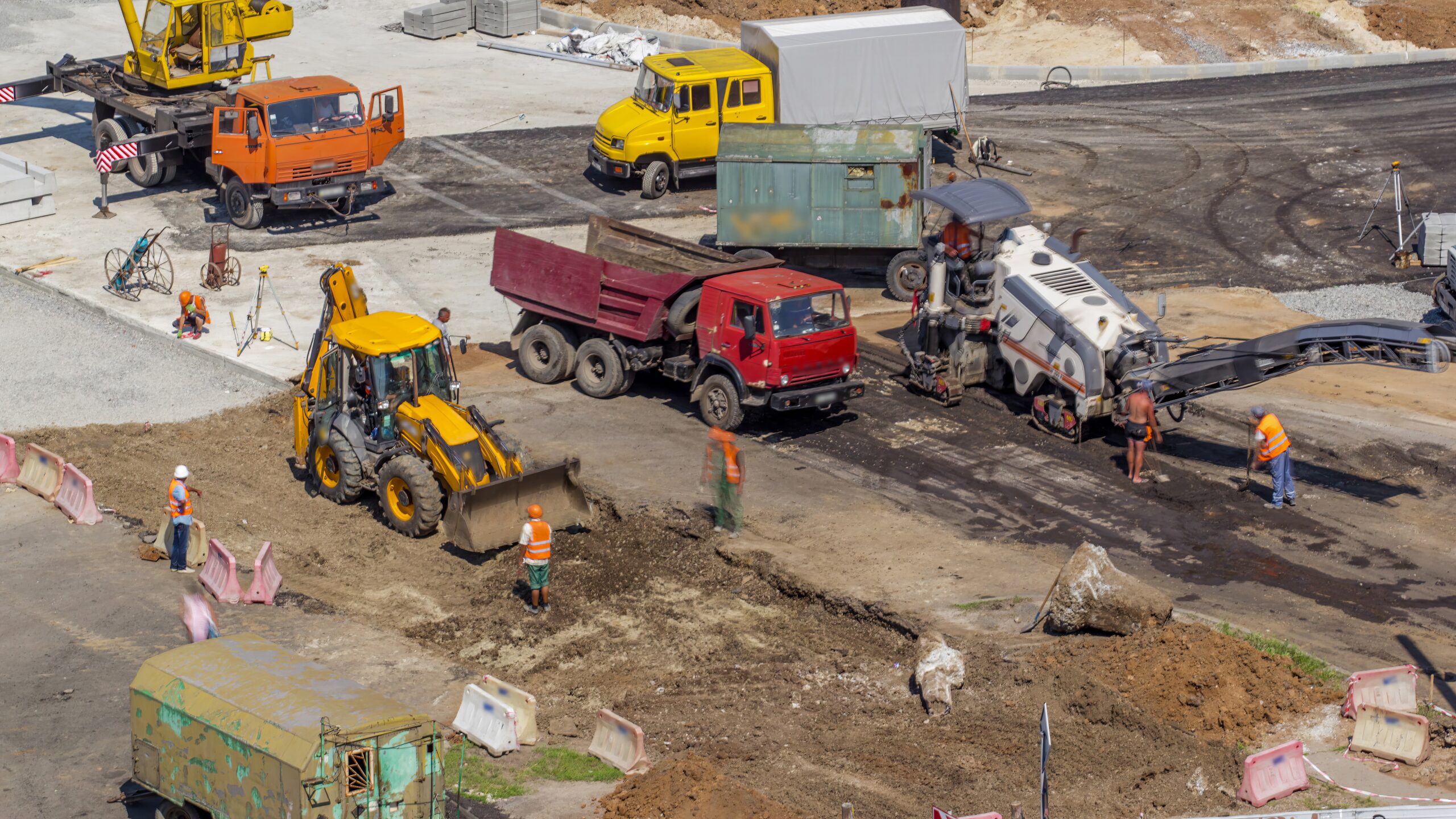
Asphalt surfaces are durable but not permanent. Over time, environmental factors, traffic stress, and poor maintenance cause visible and hidden deterioration. Timely identification of these warning signs helps prevent major damage and reduces repair costs. Homeowners, facility managers, and property owners must recognize early surface distress to avoid long-term issues.
This guide explains the physical, structural, and visual indicators that signal immediate asphalt repair. Whether you’re managing a driveway or commercial lot, these insights can help you make informed decisions. You’ll also find asphalt repair lifespan, safe DIY steps, seasonal recommendations, and fixing asphalt damage tailored to maintain your asphalt’s condition and lifespan.
Discover the Advantages of Choosing Asphalt Coating Company
When it comes to asphalt repair, you need a company you can trust. Here’s why Asphalt Coating Company is the best choice for your pavement needs:
- Experienced Professionals: Our team has years of experience in the asphalt repair industry.
- High-Quality Materials: We only use the best materials to ensure durable and long-lasting repairs.
- Comprehensive Services: From crack sealing to full resurfacing, we offer a wide range of services to meet your needs.
- Affordable Pricing: We offer competitive prices and free estimates to ensure you get the best value for your investment.
- Guaranteed Workmanship: We stand by our work and offer warranties on all repairs.
1. Cracks: The First and Most Common Sign of Asphalt Damage
Understanding Asphalt Cracks
Cracks in asphalt are the first visible signs of deterioration. They occur due to various reasons, including weather exposure, traffic load, and poor maintenance. Cracks can begin as small hairline fissures and gradually widen over time. When moisture gets into the cracks, it can further weaken the asphalt base and cause more severe damage.
Common Types of Cracks:
- Alligator Cracking: This is a grid-like pattern of cracks resembling the scales of an alligator. It is often caused by fatigue due to repeated loading and can indicate deeper structural problems.
- Longitudinal Cracks: These cracks run parallel to traffic flow and are typically caused by thermal expansion or contraction of the asphalt.
- Transverse Cracks: These cracks appear perpendicular to the direction of traffic and are usually caused by expansion and contraction due to temperature changes.
- Edge Cracks: These occur near the edges of the pavement, often caused by erosion or poor drainage around the curb or roadside.
When to Address Cracks: If cracks exceed ¼ inch in width, it’s time for immediate repair. Cracks of this size can allow water to penetrate beneath the surface, which will weaken the base and lead to further damage. If left untreated, cracks can lead to the formation of potholes and cause structural failure.
2. Potholes: A Major Asphalt Hazard
What Causes Potholes?
Potholes are one of the most significant issues you may face with asphalt. These depressions form when water gets beneath the surface and softens the base. Over time, as traffic continues to pass over the weakened asphalt, the material starts to erode, creating a hole. The freeze-thaw cycle during colder months often accelerates this process.
How Potholes Develop:
- Moisture: When water seeps through cracks into the asphalt and freezes, it expands. This puts additional pressure on the asphalt surface and causes it to crack further.
- Traffic Load: Heavy vehicles and constant traffic traffic create more stress on the asphalt surface, especially when there is already underlying damage.
- Poor Base Support: If the base material beneath the asphalt is improperly compacted or weak, it can further contribute to ignoring small cracks.
Why Immediate Pothole Repair is Important: Potholes pose a significant hazard to both vehicles and pedestrians. They can cause accidents, damage vehicles, and lead to further degradation of the asphalt. Repairing potholes early prevents them from expanding and causing deeper structural problems.
3. Standing Water: A Clear Indicator of Drainage Problems
Water and Asphalt: A Dangerous Combination
Asphalt is designed to handle rainwater, but standing water on the surface is a warning sign of drainage issues. If water remains on the asphalt for an extended period, it can infiltrate the surface and weaken the foundation beneath. Poor drainage, base erosion, or improper grading can cause water to collect and result in more serious damage over time.
Why Drainage Matters: Water is one of the most damaging elements to asphalt. When the surface is flat or poorly graded, water cannot drain properly, leading to puddles and standing water. Over time, this moisture weakens the surface, causing cracks, raveling, and even sinkholes.
What You Should Do: If you notice puddles or standing water after a rainfall, you may need to adjust the slope or address underlying drainage issues. Proper drainage prevents water from damaging the surface and can significantly extend the lifespan of your asphalt.
4. Oxidation: When Asphalt Loses Its Flexibility
Understanding Asphalt Oxidation
Asphalt surfaces are made up of oils and resins that help maintain their flexibility and dark color. However, when exposed to UV rays, heat, and weather, these oils evaporate through a process known as oxidation. As oxidation occurs, the asphalt becomes brittle, loses its flexibility, and is more prone to cracking.
Signs of Oxidation:
- Faded Color: Asphalt that has undergone oxidation will often appear gray or dull, instead of the deep black color associated with healthy pavement.
- Increased Brittleness: Oxidized asphalt is more susceptible to cracking, which can lead to the formation of larger fissures or potholes.
How to Prevent Oxidation: Sealcoating is the most effective way to protect asphalt from oxidation. By applying a fresh layer of sealant every 2–3 years, you can restore the dark appearance of your asphalt and protect it from the sun’s damaging UV rays.
5. Surface Raveling: A Serious Surface Breakdown
What is Raveling?
Raveling is the process by which the top layer of the asphalt begins to break apart, causing loose aggregate or gravel to accumulate on the surface. This condition typically starts small but can quickly spread if left untreated. Raveling makes the surface rough and uneven, and it can create dangerous driving conditions.
How Raveling Occurs:
- Aging: Over time, the asphalt binder that holds the aggregate together deteriorates, causing the surface to lose its cohesion.
- Heavy Traffic: Continuous pressure from vehicles can cause the surface to break down, especially if the asphalt was poorly constructed.
- Poor Maintenance: Lack of regular sealcoating and minor crack repairs can contribute to raveling.
How to Address Raveling: Raveling is typically treated with sealcoating. For more extensive damage, resurfacing may be necessary.
6. Buckling and Warping: Structural Shifts in Asphalt
What Causes Buckling and Warping?
When moisture erodes the base beneath the asphalt, it can cause the surface to shift or warp. Buckling appears as uneven, raised areas that can make the surface unstable. This type of damage usually indicates structural issues with the base or subgrade.
Why This is Serious:
- Buckling and warping create hazardous driving conditions.
- These deformations may worsen under heavy traffic and lead to deeper structural failure.
- Repairs typically involve excavation, re-compaction of the base, and resurfacing of the asphalt.
7. Sinkholes and Depressions: Serious Structural Failures
Understanding Sinkholes
Sinkholes are deep depressions that form when the underlying material beneath the asphalt collapses. This can occur due to poor drainage, erosion, or the loss of sub-base support. Sinkholes are dangerous and can lead to serious accidents.
What Causes Sinkholes?
- Erosion: Over time, water erosion can wash away the base material beneath the surface.
- Weak Sub-base: If the foundation wasn’t properly compacted or reinforced during installation, it may collapse under pressure.
How to Address Sinkholes: If you notice sinkholes or soft spots in your asphalt, they should be inspected by professionals. These issues usually require significant repairs, including base replacement and resurfacing.
8. Faded Line Striping: A Safety Hazard
Why Line Striping is Important
Properly visible line striping is crucial for traffic safety. When line markings start to fade, it can cause confusion for drivers, potentially leading to accidents. Clear markings are also required for ADA compliance.
When to Repaint Lines:
- When the lines become hard to see, especially at night or in wet conditions.
- When the markings start to wear due to heavy traffic or weather exposure.
Repainting your lines not only improves safety but also enhances the overall appearance of your property.
9. Performing Regular Asphalt Inspections: Key to Preventing Major Damage
How to Inspect Asphalt Yourself
Regular inspections are essential to prevent minor issues from turning into costly repairs. A simple walk-through of your pavement can help you identify early warning signs of damage. Here’s a checklist for DIY asphalt inspections:
- Walk the entire surface slowly and methodically.
- Look for cracks wider than ¼ inch and mark them.
- Use a screwdriver to check for soft spots and depressions.
- Ensure that water drains properly off the surface.
- Take photos of areas of concern for comparison.
It’s advisable to perform this inspection twice a year, ideally in the spring and fall.
Quality Asphalt Repair Services Tailored to Your Needs
If you’re dealing with any of the above asphalt issues, Asphalt Coating Company is here to help. We specialize in all types of asphalt repairs, from crack sealing and pothole patching to full resurfacing. Our team of professionals uses top-grade materials and equipment to ensure long-lasting repairs.
We understand that asphalt maintenance is an investment, and our goal is to help you get the most out of your pavement. Contact us today to schedule a professional inspection and get an accurate assessment of your asphalt needs.
Frequently Asked Questions
What are the common signs that asphalt needs repair?
Signs include cracks (such as alligator or linear cracks), potholes, fading, uneven surfaces, and water pooling. These issues indicate wear and tear that, if left unaddressed, can lead to more severe damage.
How are cracks in asphalt repaired?
Cracks are cleaned to remove debris, then filled with a specialized sealant to prevent water infiltration. In some cases, additional sealing may be applied for extra protection.
What causes potholes in asphalt, and how are they fixed?
Potholes form due to water infiltration weakening the sub-base, often exacerbated by freeze-thaw cycles. Repairs involve removing damaged material and replacing it with new asphalt using methods like infrared patching or full-depth replacement.
Can drainage issues affect asphalt durability?
Yes, poor drainage leads to standing water that erodes the asphalt and its sub-base, causing cracks and potholes. Fixes include installing proper drainage systems or resloping the pavement for better water flow.
How can regular maintenance prevent costly repairs?
Routine inspections, crack sealing, seal coating, and cleaning help prolong the lifespan of asphalt by addressing minor issues before they escalate into major problems.
Reach Out for Comprehensive Asphalt Repair
If your asphalt shows any signs of damage, it’s essential to act quickly to avoid further deterioration. Asphalt Coating Company offers comprehensive asphalt services, including inspection, repair, and maintenance. Our experts are ready to help you extend the life of your asphalt and ensure it remains safe and functional for years to come.



